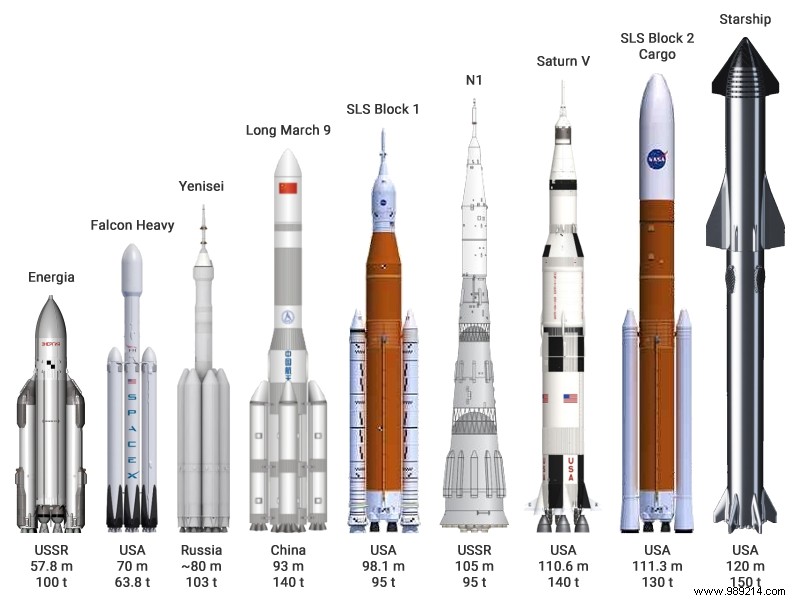Third space power, China once again shows its ambitions for human exploration of deep space, by officially announcing the development of its super heavy Long March launcher 9.
The Chinese space program has made significant progress in recent years. Two years ago, the country notably distinguished itself by successfully depositing a rover (still active) on the far side of the Moon. It was then a first. More recently, China also brought back to Earth the first lunar samples in forty years. Finally, the country is also preparing for a historic landing on Mars as part of its Tianwen-1 mission. Without forgetting its future space station which will soon succeed the ISS.
But that's just the start. China, like NASA or SpaceX, is also planning human exploration of deep space, with the Moon and the Red Planet in sight. In this spirit, the Chinese space administration presented three years ago a new super heavy launcher project:the Long March 9 (or CZ-9). China has just officially approved its development , we learned on Wednesday.
The development prospects of the CZ-9 had been questioned a few months ago, when China announced that it wanted to focus on the construction of another launcher composed of three five-meter-diameter cores, in a style similar to the two American heavy launchers:United Launch Alliance's Delta IV Heavy, and SpaceX's Falcon Heavy. For now, it appears that China wants to develop both launchers.
For its part, the Long March 9 should be able to lift about 130 tons of payloads in low orbit, and about fifty tons in lunar orbit. Physically, this launcher will be huge, with a ten-meter diameter core and five-meter side boosters. China would also like to make this rocket – at least in part – reusable.

In an excerpt from an interview with CCTV, the deputy director of the Chinese National Space Agency, Wu Yanhua, said that the main purpose of this new rocket would be to allow “ any crewed Moon or Mars landing mission ” that the country could undertake. According to Chinese officials, a first launch could be made in the early 2030s .
The deadline may seem distant, but it is worth remembering that the development of NASA's SLS (Space Launch System) rocket, which will be about as powerful, has was started about ten years ago. The initial configuration of this launcher will have a lifting capacity of 70 to 85 tons and could be launched in 2022.